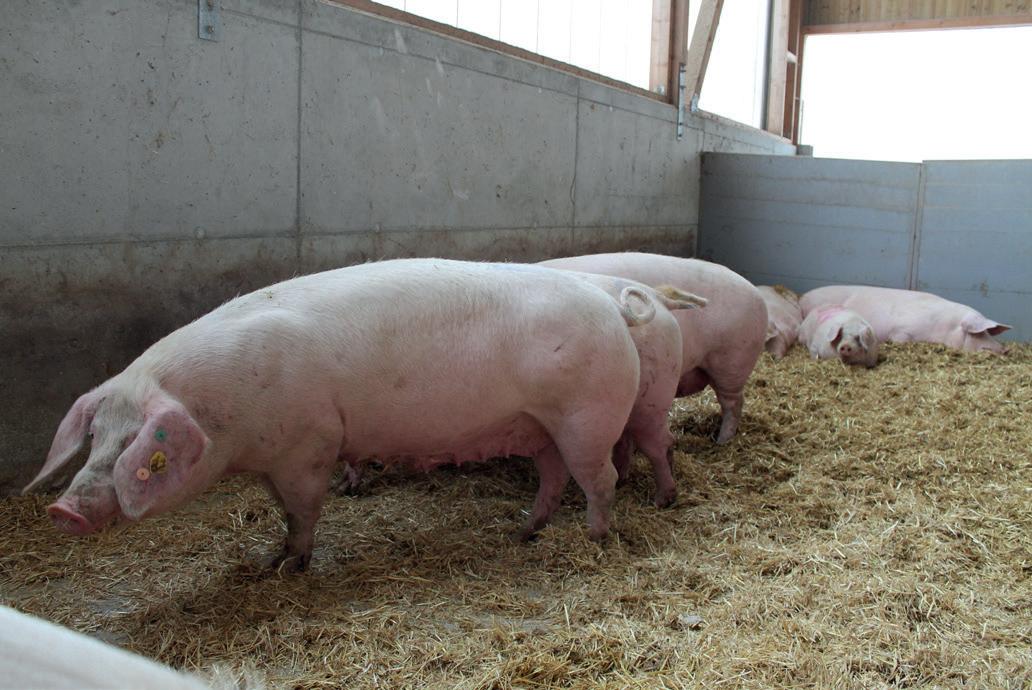
1 minute read
Swiss Landrace pig
Boar of the Swiss Landrace breed (SUISAG)
Origin and development
The Swiss Landrace pig has been the subject of breeding programmes since the early 1900s. It derives from old native breeds and was significantly improved by breeds imported from various countries. The Swiss Landrace pig is bred as a dam line and is particularly suitable for the production of fertile and long-lived cross-bred sows.
Description
White pig with lop ears and an average of 16 teats.
Breeding objectives
Optimum litter size and minimal suckling losses. Small number of non productive sow days. Good lifetime performance with regular litters and low within-litter birthweight variation. Optimum weight gain with good feed conversion and medium-fleshed animals. Selection for E. coli F18 resistance.

Group of pregnant sows of the Swiss Landrace breed (SUISAG)
Performance traits of animals registered in the herdbook (2019)
Reproductive performance h 12.9 live-born piglets per litter h 2.4 litters per sow per year
Ultrasound on-farm testing (males) h 99.1 kg weight at end of test h 145 days of age at end of test h 681 g lifetime average daily gain Ultrasound on-farm testing (females) h 98.2 kg weight at end of test h 159 days of age at end of test h 618 g lifetime average daily gain
Station testing (females and castrated males) h 977 g average daily gain during fattening h 2.59 kg/kg feed conversion h 56.0% lean meat content h 1.8% intramuscular fat content h 100.5 cm carcass length
References
Suisseporcs (www.suisseporcs.ch) SUISAG (www.suisag.ch)










